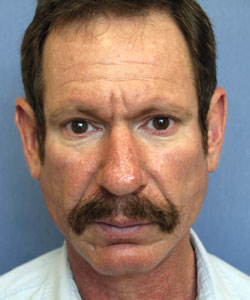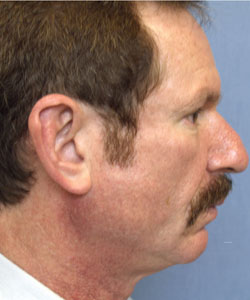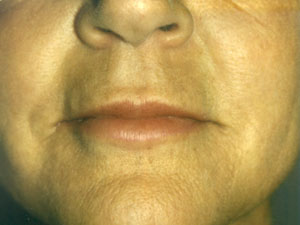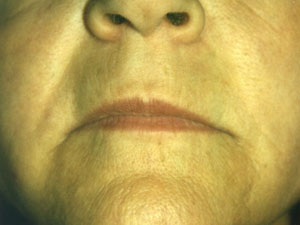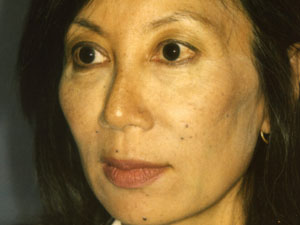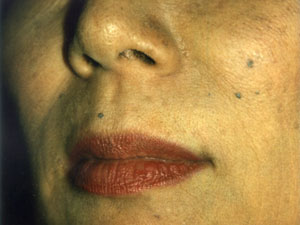Injectables
There are so many injectables it is confusing – even for me, and I’ve been in the business for over twenty five years. Years ago, we started with collagen, but it was expensive and, since it was made from cows, people developed sensitivities to it. Manufacturers then developed collagen from pigs, and later even human collagen, but still there were problems. Thick and stringy naturally, collagen had to be broken down into small pieces in order to be injected. Collagen is what makes your skin tough –leather is a cow’s skin, which is just processed and dried collagen. The fine, white stringy fibers on the inside of leather are actually pieces of cow collagen. Now to make it a smooth consistency, the collagen had to be broken down, which made it not last very long, and this started scientists on their quest for other injectables.
Skin is naturally made up of many materials, with collagen as the primary component. But in life, the tough fibers of collagen sit in a gel matrix of hyaluronic acid among other things. To fight wrinkles, the approach is to increase the quality and quantity of collagen. Thermage is trying to improve the quality and quantity by using radio frequency waves; injectables are actually putting in more collagen, or placing something that promotes collagen formation.
Researchers and patients (and the manufacturers!) wanted products that would last longer, be easy to inject and not cause allergic reactions. Now, I would say, we do have such products, with two major categories: natural and synthetic.
Natural
Hyaluronic acid derivatives. Hylaform, Restylane and Juvederm are all made from hyalurnoic acid. Hyaluronic acid (HA) is found naturally in your body in your joints and in your skin. These products can be almost bioidentical to the stuff already in your skin, and therefore the incidence of allergic reactions is very, very low. HA is found in your normal skin, and when it is injected, it increases the water in your tissue, and also promotes collagen deposition. In a way, then it makes your body build up more collagen, which is why it lasts longer than regular old collagen, and why it can be injected very superficially in your skin.
Synthetics
Sculptra, Radiesse, and Artecolle are all synthetic products, designed to increase collagen production as well. But they do this more both by adding volume to your tissue, and by stimulating a localized reaction in your skin. Sculptra has an advantage in that it comes in vials that are five times larger than the others, but it must be injected more deeply. It can last up to three years, but in general you shoud expect one to one and one half years. Radiesse is designed for long-acting correction, but can be associated with small nodules, especially if it gets too close to the surface.
BOTOX
is really one of the great pharmaceutical breakthroughs in our life-time. It represents a whole new class of drugs, just like penicillin started antibiotics. Botox acts on motor neuron end plates to block transmission of impulses. Basically it can relax the muscles, and can reduce spasms. Doctors have used it to reduce spasms in both the esophagus and anal sphincters, with unwanted spasms around the eyes, and, of course, to help reduce those worry frown lines. These worry lines are also sometimes just the result of constant tension and contraction of those muscles. BOTOX can even decrease excessive sweating under the arms!
The advantage of BOTOX is that its effects are temporary. Temporary is an ADVANTAGE. Nothing is permanent and, if you hate the look, it will be gone. But, in my experience, if you love the look, then keep up the BOTOX religiously for one year by repeating the treatment every two, three or four months. Usually, after aggressive treatment, the muscles relax!! They weaken. After all, they’ve been given a twelve month reprieve from all that frowning work. They become trained not to frown. It seems that the need for BOTOX (amount and frequency) diminishes, if you take this aggressive one year approach.
Both Catherine and Sylvia, our Physicians Assistants, and our nurse Chelsi Moore have had a lot experience with BOTOX and these other injections. They know many advanced techniques for all over your face – lips, neck, jowls, as well as frown lines. And, of course, they are always gentle.
BOTOX is a wonderful drug and now a familiar cosmetic treatment. Even Doctor McDreamy, of Grey’s Anatomy fame, admits to using it. He didn’t like his face without it – too severe and angry looking – and now, he’s Doctor McDreamy!
Before and After Photos
Patient A (Sculptra)
This gentleman had a total of 8 vials of Sculptra injected over a 3 year period to improve is facial lipoatrophy (loss of fat!). It gives his face a nice, healthy glow.
Patient B (Juvederm)
Sometimes people think of lip injections, and the are thinking of Goldie Hawn in “First Wives Club.” Just 1.5 ccs of Juvederm in this young lady’s lips helped plump up her lips as well as improve those down turn lines at the sides.
Patient C (Restylane)
Hyaluronic acid. This photo isn’t great, but I carry this Polaroid of myself around in my pocket. I first tried Restylane on November 27, 2002, before it was released in the US. The after photo was taken August 3, 2007. These injections really helped those deep nasolabial folds, and it lasts and lasts a crazy long time on me! I have really enjoyed it, because it gives such a natural look. Okay, I did cheat with a little with Thermage on the side, but five years later you can’t have folds be better without doing a little something!

